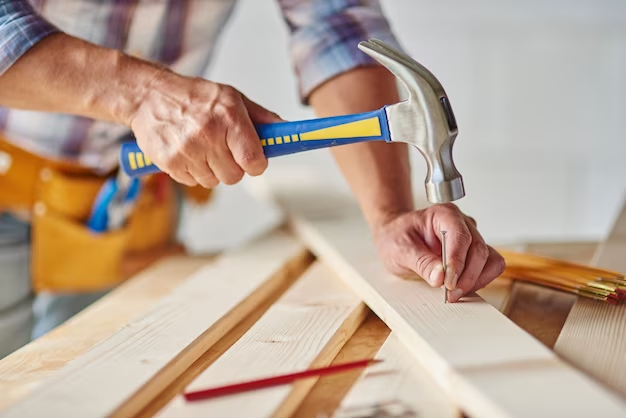
Maintaining a clean and organized job site is crucial for the success of any renovation project. Not only does it contribute to a safer working environment, but it also increases productivity, reduces the risk of damage or theft, and leaves a positive impression on clients. After speaking with a leading Mesa roofing company, here are seven tips to ensure efficient job-site clean-up and a seamless renovation experience.
1. Plan for Clean-Up

Effective job site clean-up starts with proper planning. Before construction begins, clear the designated area of any debris or obstacles that may hinder the clean-up process. Having clearly marked pathways and designated waste receptacles is essential for maintaining organization. Invest in quality tools that last longer, contributing to less waste generated by broken or inefficient tools. For example, specialized knives for cutting insulation will provide clean cuts and reduce the production of dust and small debris. Finally, be sure that the job site has adequate restroom facilities in place before the project starts. Workers should have easy access to restrooms and not be tempted to cut through off-limits areas when they need to go.
2. Keep the Area Secure
Vandalism and theft are significant concerns for construction projects, leading to costly delays and additional clean-up efforts. Implementing proper security measures is crucial to deter potential intruders and minimize the risk of damage or loss. Secure the site by installing temporary fencing, security cameras, and access control systems. Regularly inspect the premises to identify any signs of tampering or potential security breaches. Ensure that all tools and equipment are properly secured and stored away when not in use. Keeping the site clean and free of debris can act as a deterrent, as an unkempt job site may attract unwanted attention. Additionally, make sure that wildlife can't access the site by blocking off any potential entry points with fencing.
3. Remove Waste Every Day

Letting debris accumulate on a construction site can significantly hinder work processes and pose safety hazards. Establish a routine for daily waste removal to maintain a clean and safe environment. Assign specific individuals or teams to handle waste management, ensuring that trash, scrap materials, and debris are promptly disposed of. Having a designated area for waste collection equipped with appropriate bins helps streamline the clean-up process. Always follow the local regulations and guidelines for waste disposal. Regular waste removal also contributes to a more organized and efficient work environment, reducing the risk of accidents and potential liabilities.
4. Clear Out Unused Items
Unused tools, materials, and equipment lying around the job site not only obstruct work processes but also pose a potential hazard. Regularly inspect the site to identify items that are no longer needed and promptly remove them. This decluttering process enhances overall efficiency and safety on the construction site. Return any rented or borrowed equipment as soon as possible, and keep track of tools to avoid misplacement or loss. Proper inventory management helps reduce the risk of theft, loss, and unnecessary clutter.
5. Promote Air Quality

Maintaining good air quality on a construction site is crucial for the health and safety of workers, as well as for preventing dust and mold spore buildup, which can lead to time-consuming clean-up efforts. Here are some tips to enhance air quality:
- Use dust-control measures such as air filtration systems and water misters.
- Ensure proper ventilation to disperse fumes and contaminants.
- Regularly clean and maintain equipment to reduce emissions.
- Use low-VOC (volatile organic compound) paints, adhesives, and sealants.
Tiny airborne particles may not seem like much of a threat to a construction project upfront, but they have a way of rapidly accumulating and wreaking havoc as time elapses, so it is essential to stay ahead of them.
6. Check the Floors
During a renovation project, floors are prone to damage and dirt accumulation. Regularly sweeping and cleaning floors not only improves the overall appearance of the job site but also protects the floor surfaces from scratches, stains, and cracks. Utilize drop cloths or protective covers in areas where heavy machinery or tools are being used, or during activities that may generate excessive debris. Clean up spills and debris promptly to prevent them from becoming a safety hazard or attracting pests. Use concrete and masonry cleaner to prevent moisture damage and staining to stone surfaces.
7. Don't Make Cleanup an Afterthought
Clean-up should be an ongoing process throughout the renovation project and not merely an afterthought. Assign specific responsibilities to team members regarding maintaining a clean work environment. If possible, dedicate a team or individuals solely responsible for clean-up tasks. This ensures that cleaning is not neglected and that the job site remains organized and presentable. Additionally, it is advisable to hire a job site inspector at the end of the project to ensure that everything looks good and there are no lingering concerns. By adhering to these guidelines, you can maintain a clean and safe job site, enhancing productivity, reducing risks, and leaving a positive impression on clients.
Ensure a Successful Renovation Through Meticulous Cleanup
Job-site cleanup is more than just something to do in the last 15 minutes of a workday--it is an essential component of a successful construction project. By implementing these tips, you can ensure a clean, safe, and productive job site, allowing your renovation project to proceed smoothly and efficiently. Remember, a well-maintained work environment not only enhances the overall experience for everyone involved but also contributes to the successful completion of your project.
